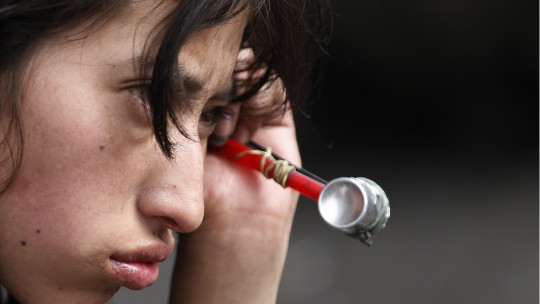
Dual pathology is a very serious physical and mental health problem, given that it combines at least two alterations capable of quickly wearing down the person’s well-being and even their social and family relationships.
Therefore, in the face of this phenomenon, it is essential to seek professional help as soon as possible, starting a treatment that allows the existing disorders in the person’s daily life to reverse and prevent the problems that could arise in the future if they are not remedied. In this article we will see what they are the characteristics of this treatment of dual pathology.
Characteristics of dual pathology
Dual pathology is a phenomenon that encompasses a wide variety of mental health problems; Fundamentally, it is the combination of an addictive disorder, on the one hand, and a psychological disorder, on the other. Thus, within this concept it is possible to find health complications as different as the mixture of alcoholism and bipolar disorder, or heroin addiction and Post-Traumatic Stress Disorder, etc.
Furthermore, it may occur either that the addiction has been facilitated or triggered by the psychological disorder (as a way to “compensate” in a maladaptive way for the discomfort generated by the psychopathology) or that the psychological disorder has been caused by the addiction (as a disruptive element in the person’s emotional balance), or both complications may even arise in parallel due to a common cause (for example, a traumatic situation linked to the sudden death of a loved one).

Why is dual pathology a problem?
Although, as we have seen, a great diversity of alterations is included within this category, There are some characteristics that make dual pathology a very serious health problem that goes beyond the sum of its pathologies. understood as separate disorders. Let’s see what they are.
1. Promotes emotional instability
The combination of the psychological disorder and the addictive disorder causes the person to experience mood swings frequently, since To the discomfort caused by the relative lack of drugs in the body is added the problems of managing the emotions linked to it.. In this way, the “easy way out” that remains for the person is to continue using drugs to alleviate the discomfort, even if only for the moment.
2. Requires a more complete treatment
Although this in itself is not a problem for the well-being of those who suffer from dual pathology, it is a factor that leads some to not decide to urgently seek the health help they needwhich contributes to his state of health deteriorating the more time passes.
3. Promotes impulsiveness
Dual pathology usually has a greater capacity to lead the person to extreme situations in which you notice that what happens to you overwhelms youwhich makes him give in more easily to impulses, at the cost of his health and social relationships.
4. It can lead to death due to overdose
In those cases in which the person’s ability to reason or interpret reality is altered by the psychological disorder, death due to overdose may occur. due to the inability to predict the consequences of consuming too high a dose of the substance, or of mixing certain drugs.
This is the effective treatment of dual pathology
Below we will explain the main characteristics of an effective treatment for dual pathology, based on the principles of the NIDA (National Institute of Drug Abuse), which are those used by the teams specialized in mental health and addictions.
1. Treatment must be focused on the well-being of the person as a whole
The intervention should not be focused only on the addiction or only on the psychological disorder, but rather The ultimate goal should be to significantly improve the patient’s quality of life..
Of course, for this it is important to take into account the different diagnostic conditions that may be affecting it, and apply the therapies that have been shown to be effective against these alterations, but without ceasing to provide personalized treatment.
2. Treatment must be monitored and evaluated
The evaluation phase does not occur only at the beginning of the intervention to see what problems affect the person; constant evaluation must be carried out to detect possible progress made, or the lack thereof, in order to make corrections at any stage of the treatment.
3. Family involvement should be sought
To the extent possible, it is crucial to establish a channel of fluid communication with the patient’s family and encourage them to get involved in the recovery of the health of thisboth giving them instructions on what they should not do to avoid harming their progress, and also giving them guidelines to support that person in the domestic sphere.
- Related article: “Family therapy: types and forms of application”
4. Medicine and psychotherapy resources should be used
There is no need to adopt a closed and dogmatic view about which perspective best explains the person’s dual pathology problem.; If it is possible to combine pharmacological and psychotherapeutic resources to obtain better results and contribute to maintaining health improvement over time, they should be used (of course, always through professional support, not through self-medication or “self-diagnoses”). by the patient).
5. Detoxification is just one of the phases of treatment
If we only focus on detoxification, soon after the drug has been eliminated from the person’s system, they will return to using, relapsing again and again.
Therefore, it is essential to focus not only on the problem posed by the presence of psychoactive substances in the person’s nervous system, but also intervene in their patterns of behavior, thinking, emotional management and ways of socializing. One part of the therapy is medical, and another is psychotherapeutic, training the person to better modulate their actions, their feelings, their way of communicating and resolving conflicts, etc.
- You may be interested: “The importance of social skills to overcome addictions”
6. The person must be prepared to detect risky behaviors and deceptive thoughts.
If the person is not trained to quickly detect situations that make it easier for them to relapse or cause their emotional balance to be greatly altered, will be more vulnerable to dual pathology.
For this reason, part of the treatment consists of metacognitive training, making the patient learn about their own mental processes from a distanced and as objective perspective as possible (although without losing sight of their objectives and what interests them to maintain a Good life quality).
7. The therapeutic alliance is essential
Therapy is not limited to providing textual information (expressed in spoken or written form) and medical resources (such as psychotropic drugs). Beyond this sender-receiver logic, it is key to take care of the therapeutic relationship, so that the patient’s involvement is facilitated and that he explains what is happening to him honestly, although without losing the professionalism on the part of the clinical staff (technically , therapists are not friends nor should they aspire to be, in order to truly help the people they serve).
- Related article: “Rapport: 5 keys to creating an environment of trust”
Do you need therapeutic support for dual pathology?
If you want to start a therapy process applied to dual pathology or an addiction problem, we invite you to contact us. In
Llaurant la Llum We specialize in the treatment of addictive disorders, offering both outpatient support and health and psychological assistance through intervention through admissions in our fully equipped residential module (and prepared for short, medium and long-term stays). You will find us in Picassent (Valencia).








